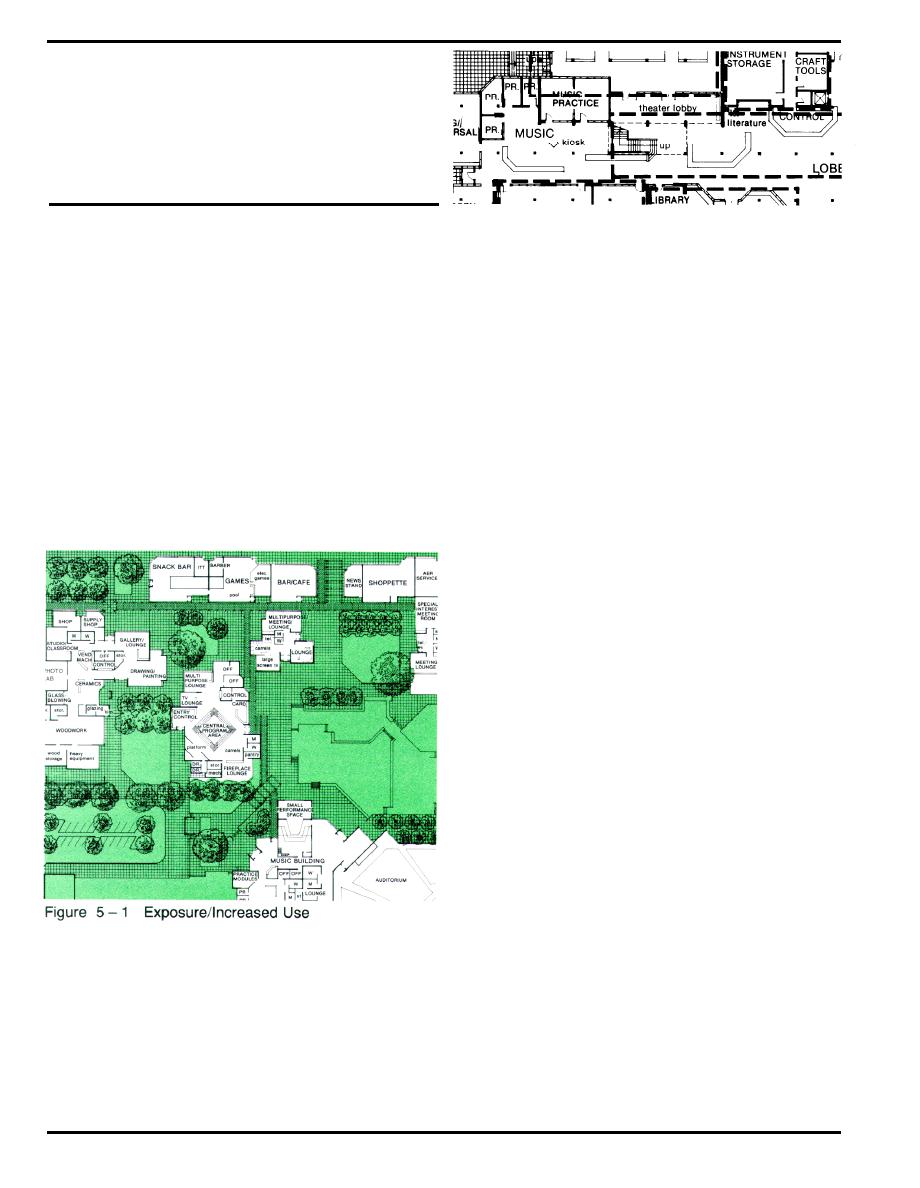
Chapter 5
5-2
Design Goals
Design of Community Activity Centers as consolidated
facilities can yield a broad range of benefits. Some can
be measured directly against costs. Others are more
qualitative and affect the way in which people view the
centers and take part in the activities. Understanding
these goals, and the design approach required to
achieve them, is essential to successful design of Com-
munity Activity Centers. The following paragraphs
describe the design implications of the principles dis-
cussed in the previous two chapters, and the considera-
tions to be applied in developing individual projects.
a. Increased Use
(1) Encourage Exposure. Each Community Activity
Center should become the center of activity for its users,
a lively place, and the place to go where friends might
be. The centers should be conveniently located along
the common routes of daily life. Such regular exposure
will encourage increased use of the center and all its
component activities.
Certain functions such as physical fitness, games and
recreation, the post exchange and commissary attract
many users. Thus they can act as magnets for the
whole center. Less actively used functions should be
located along the routes to and from these more active
facilities, to increase their exposure to new users and
invite their participation. MSA functions particularly will
benefit from co-location of post exchanges, bowling and
other commercial services in Community Activity Centers
(see figure 5 - 1).
(2)
Increase Length of Stay. In separate facilities for
single activities, users spend little time before and after
the activity. In consolidated centers with many different
activities, users spend more time both during and
between activities. There are also opportunities for
snacks, refreshments, reading, socializing and relaxing
between activities. The increased length of stay sug-
gests the possibility of exhibitions and events to heighten
user awareness of the different programs at the center.
Page 5-2 DG 1110-3-142


 Previous Page
Previous Page
